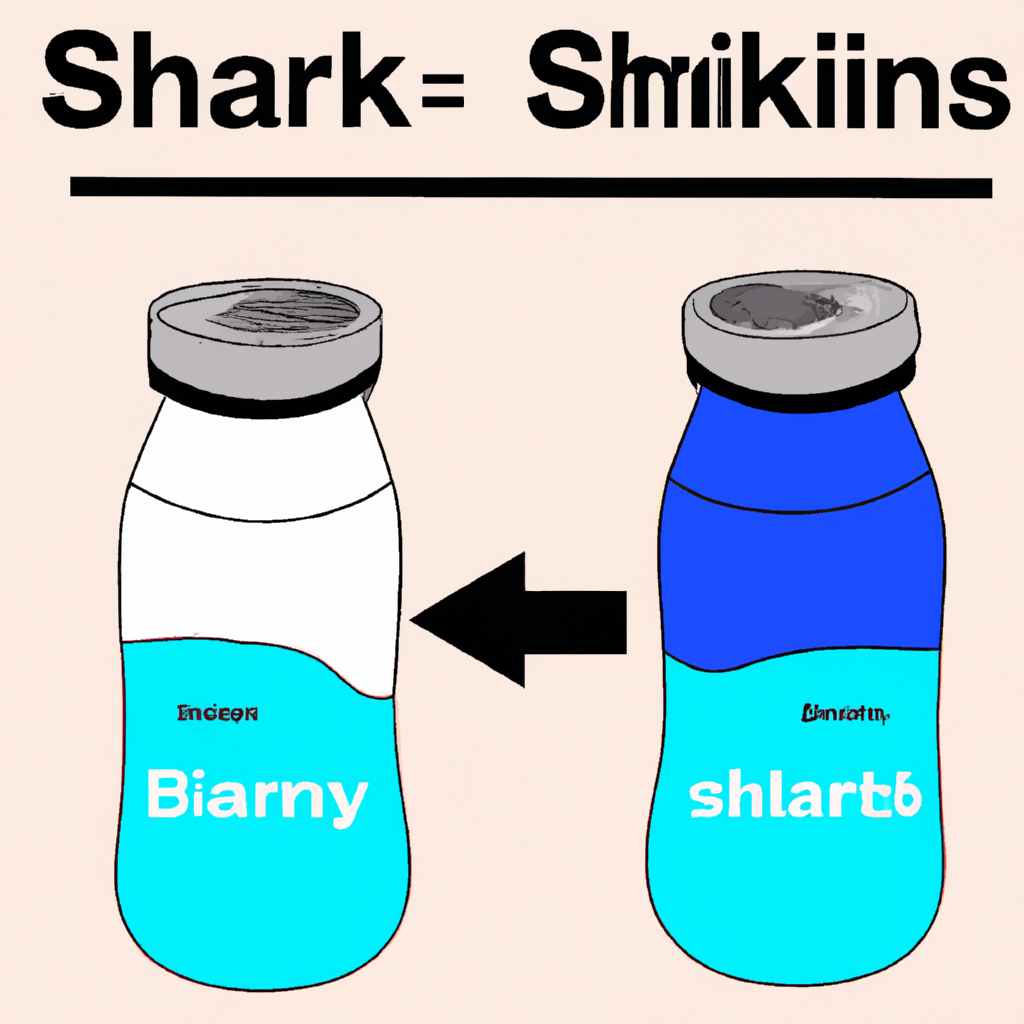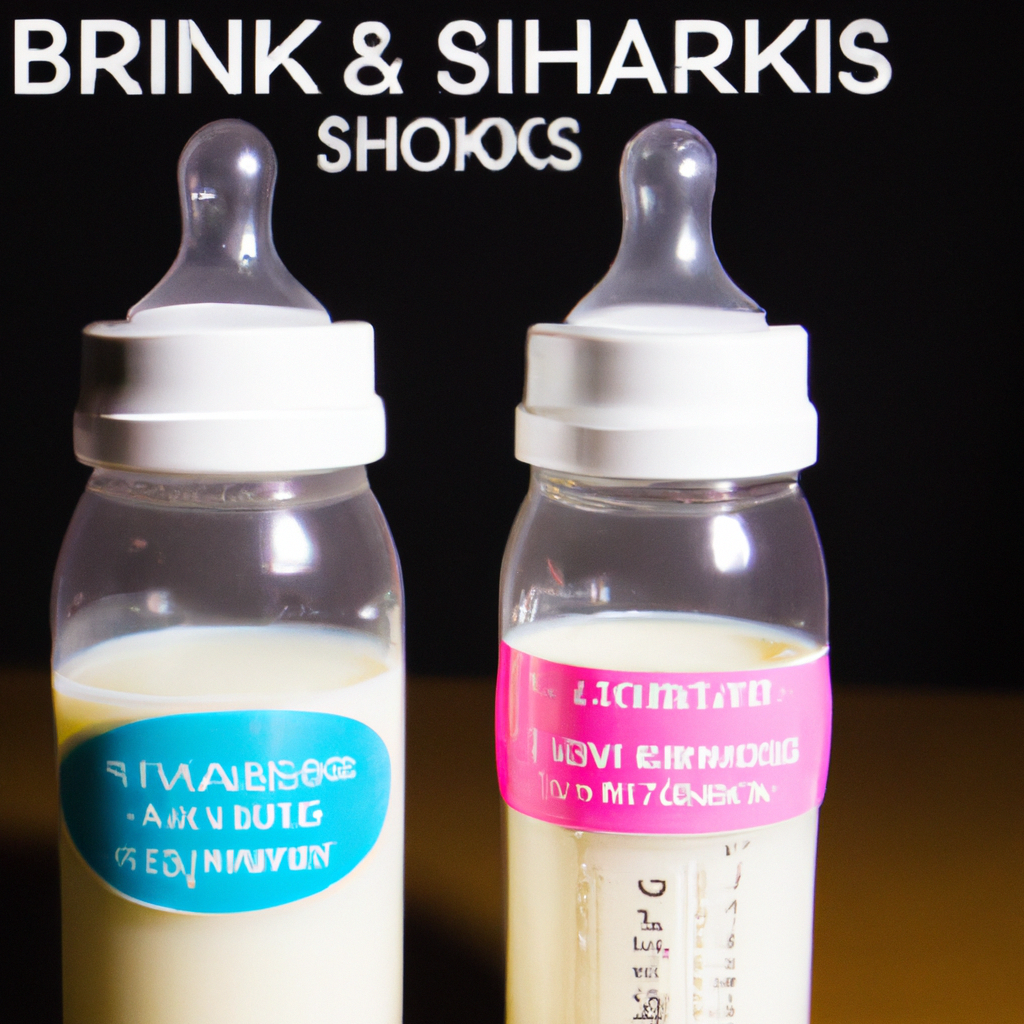Are you a new parent or soon-to-be parent wondering about the best options for providing your baby with breast milk? Look no further! In this comprehensive guide, we explore the differences between milk sharing and milk banks, giving you a clear understanding of the pros and cons of each option. Whether you’re considering the convenience and personal connection of milk sharing or the safety and reliability of milk banks, this guide will help you make an informed decision that is best for you and your little one.
Milk Sharing vs. Milk Banks: A Comprehensive Guide


Understanding the Concept of Milk Sharing and Milk Banks
When it comes to feeding infants, breast milk is widely acknowledged as the best source of nutrition. However, not all mothers are able to breastfeed their babies due to a variety of reasons. This is where the concept of milk sharing and milk banks comes into play.
Milk sharing refers to the act of one lactating mother providing her breast milk to another mother who is unable to produce milk herself. It is a mutually beneficial arrangement that promotes the well-being of both the donor and recipient infants. On the other hand, milk banks are professionally run establishments that collect, screen, and store donated breast milk, making it available to babies in need.
Benefits of Milk Sharing
Milk sharing can be a wonderful solution in situations where a mother is unable to produce enough breast milk or is unable to breastfeed her baby altogether. By sharing breast milk with another mother, you are helping to ensure that her baby receives the vital nutrients and antibodies found in breast milk, which contribute to their overall health and immune system development. Additionally, milk sharing fosters a sense of community and support among mothers, creating a network of women who are willing to help each other in times of need.
Benefits of Milk Banks
On the other hand, milk banks offer several advantages over informal milk sharing. One of the key benefits of milk banks is the rigorous screening and testing processes they have in place to ensure the safety and quality of the donated milk. All donated milk is thoroughly tested for infections, such as HIV, hepatitis, and syphilis, as well as for bacterial contamination. This significantly reduces the risk of transmitting diseases to the recipient baby. Milk banks also pasteurize the donated milk, further enhancing its safety.
Another advantage of milk banks is their ability to properly store and distribute breast milk. They provide a controlled environment that guarantees the milk is stored at the correct temperature, preventing spoilage and maintaining its nutritional value. Milk banks also carefully track the dates and times of donation and expiration, ensuring that the milk provided to babies is fresh and safe for consumption.
Safety and Quality Concerns
One of the primary concerns that parents may have when considering milk sharing or using milk banks is the safety and quality of the donated milk. While both options aim to provide safe and nutritious breast milk to babies, there are certain differences to consider.
In the case of milk sharing, the donor’s milk may not go through the same level of rigorous screening and testing as milk obtained from a milk bank. However, many informal milk sharing arrangements involve close personal connections, such as friends or family members, which can help establish trust and confidence in the safety of the donated milk. It is still important to ensure that proper hygiene measures are followed, such as thoroughly washing hands and sterilizing equipment.
On the other hand, milk banks have strict protocols in place to screen and process donated milk. This ensures that the milk is free from infections and contaminants. The pasteurization process further enhances the safety of the milk by eliminating potential bacteria. Choosing a milk bank provides a higher level of assurance for parents who prioritize safety and quality.


Criteria for Donating and Receiving Milk
Both milk sharing and milk banks have criteria that must be met for donating and receiving breast milk. These criteria vary, but generally aim to ensure the safety and well-being of both the donors and the recipient babies.
For milk sharing, it is essential to establish a relationship of trust between the donor and the recipient. Some basic considerations for a milk donor may include having a healthy lifestyle, being free from diseases that can be transmitted through breast milk, and not taking any medications or substances that could be harmful to the baby. Recipients should also ensure that they follow proper hygiene practices and have adequate storage facilities for the donated milk.
In the case of milk banks, the screening process is typically more extensive. Donors are required to undergo a thorough health screening, including blood tests, to ensure that they do not have any infectious diseases. Milk banks also require donors to commit to specific storage and collection practices to maintain the quality and safety of their milk. For recipients, milk banks may have certain eligibility criteria, such as premature birth or specific medical conditions, to determine their need for donor breast milk.
Legal and Regulatory Framework
The legal and regulatory landscape surrounding milk sharing and milk banks can vary significantly depending on the jurisdiction. It is important to be aware of the laws and regulations in your specific location to ensure compliance and to make an informed decision.
In some countries, milk banks are regulated and operate under strict guidelines enforced by health authorities. These regulations are in place to ensure the safety and quality of the donated milk and protect the well-being of the recipient babies. Conversely, the regulations surrounding informal milk sharing may be less stringent or nonexistent, leaving the responsibility of safety and health precautions solely in the hands of the involved parties.
Understanding the legal and regulatory framework in your area will help you make an informed choice and provide you with peace of mind when it comes to the safety and legality of obtaining or providing breast milk.
Accessibility and Availability
The accessibility and availability of milk sharing and milk banks can vary based on geographical location and local resources. In some areas, milk banks may be readily available, often associated with hospitals or specialized medical facilities. These banks may have well-established networks for collecting and distributing donated milk, making it relatively convenient for those in need.
However, in other areas, milk banks may be scarce or nonexistent. This can complicate the process for families who rely on donated breast milk for their babies’ nutritional needs. In such instances, milk sharing can be an alternative solution, especially if you have a network of trusted individuals within your community who can provide breast milk.
Cost Considerations
When it comes to cost, milk sharing and milk banks can differ significantly. Milk sharing arrangements are usually informal and often do not involve any monetary transactions. Mothers who share their breast milk with others are usually doing so out of kindness and a desire to help. However, it is important to consider the expenses related to storage containers, transportation, and any necessary testing for safety.
On the other hand, milk banks often charge for the processing, testing, and pasteurization of donated milk. These fees cover the operational costs associated with ensuring the safety and quality of the milk. While the cost may vary depending on the specific bank and its location, it is important to factor in these expenses when considering milk banks as an option.
Sustainability and Ethical Considerations
The concept of sustainability and ethical considerations plays a significant role in the decision between milk sharing and milk banks. Milk sharing promotes the idea of a supportive community where mothers help each other. By sharing breast milk, you are contributing to a sustainable system that reduces waste and provides infants with vital nutrition without the need for artificial alternatives.
In contrast, milk banks operate on a more centralized and professional level. They provide a structured system where donated milk is screened, stored, and distributed using clear protocols. This promotes a sense of accountability and quality control, ensuring that the donated milk is safe and beneficial for the recipient babies.
Ultimately, the decision between milk sharing and milk banks may come down to personal preferences, values, and priorities. It is important to weigh the sustainability and ethical aspects to make a choice that aligns with your beliefs.
Support and Resources for Milk Sharing and Milk Banks
There are various resources available to support parents who are considering milk sharing or milk banks. Online communities and support groups provide a platform for connecting with other mothers who have gone through similar experiences. These groups can offer guidance, advice, and reassurance during the decision-making process.
Additionally, reputable milk banks often have dedicated staff members who can answer any questions and provide support throughout the donation or recipient process. They can offer guidance on choosing the right milk bank, understanding the procedures involved, and addressing any concerns or issues that may arise.
Remember, whether you choose milk sharing or a milk bank, it is important to consult with medical professionals, such as lactation consultants or pediatricians, to ensure that it is the right choice for you and your baby. They can provide valuable insight and guidance based on your specific circumstances, helping you make an informed decision that prioritizes the health and well-being of your child.
